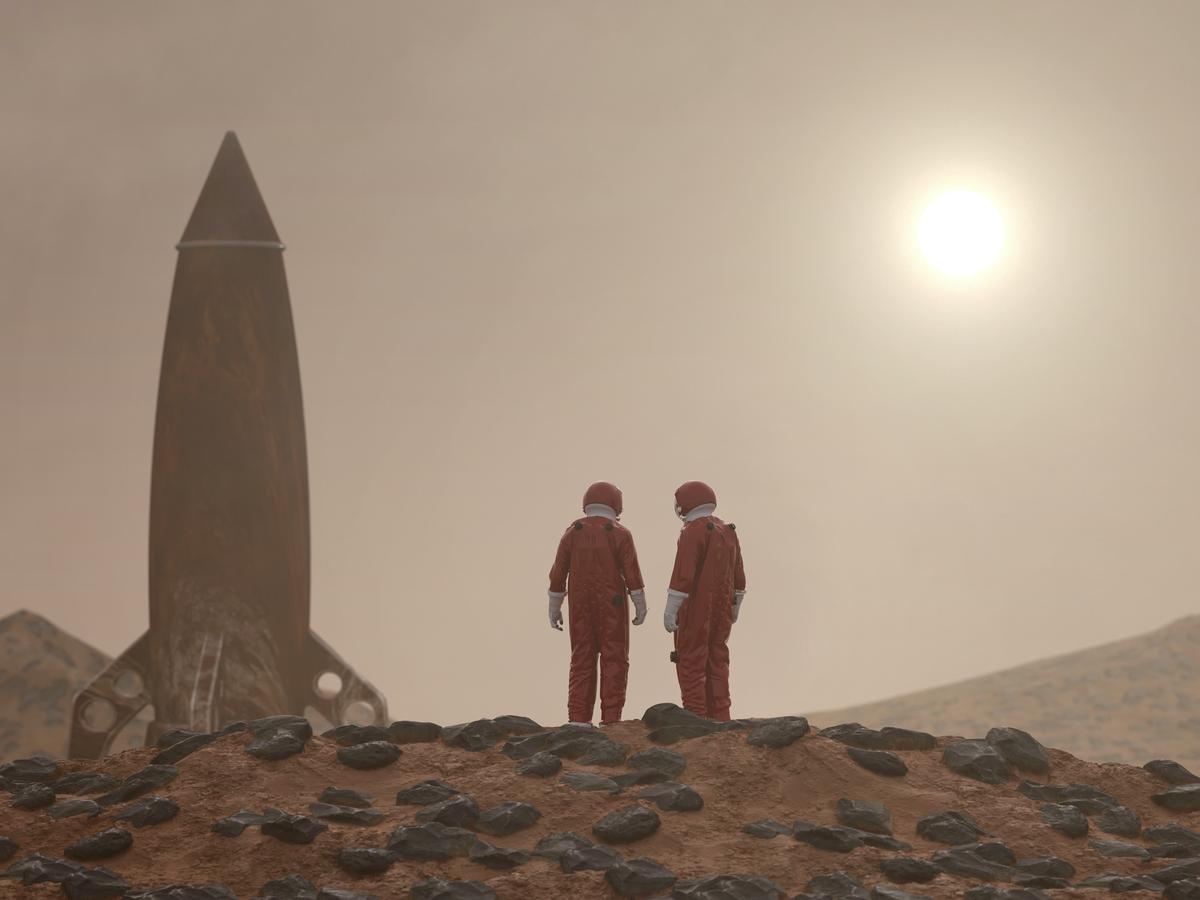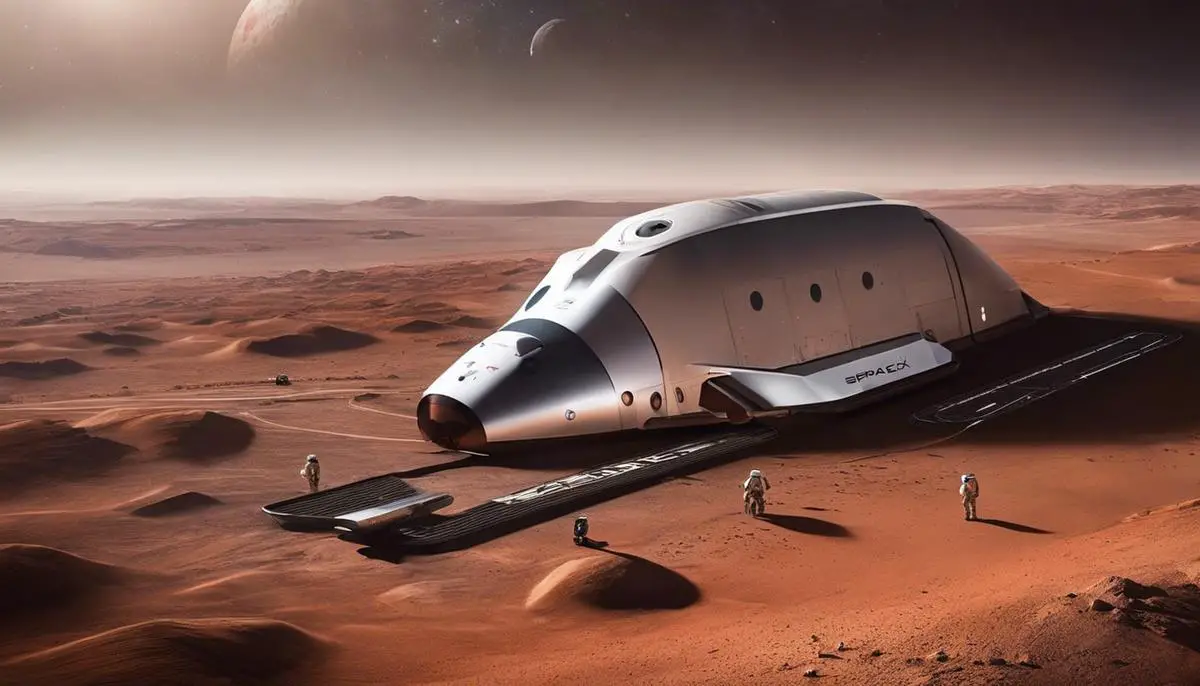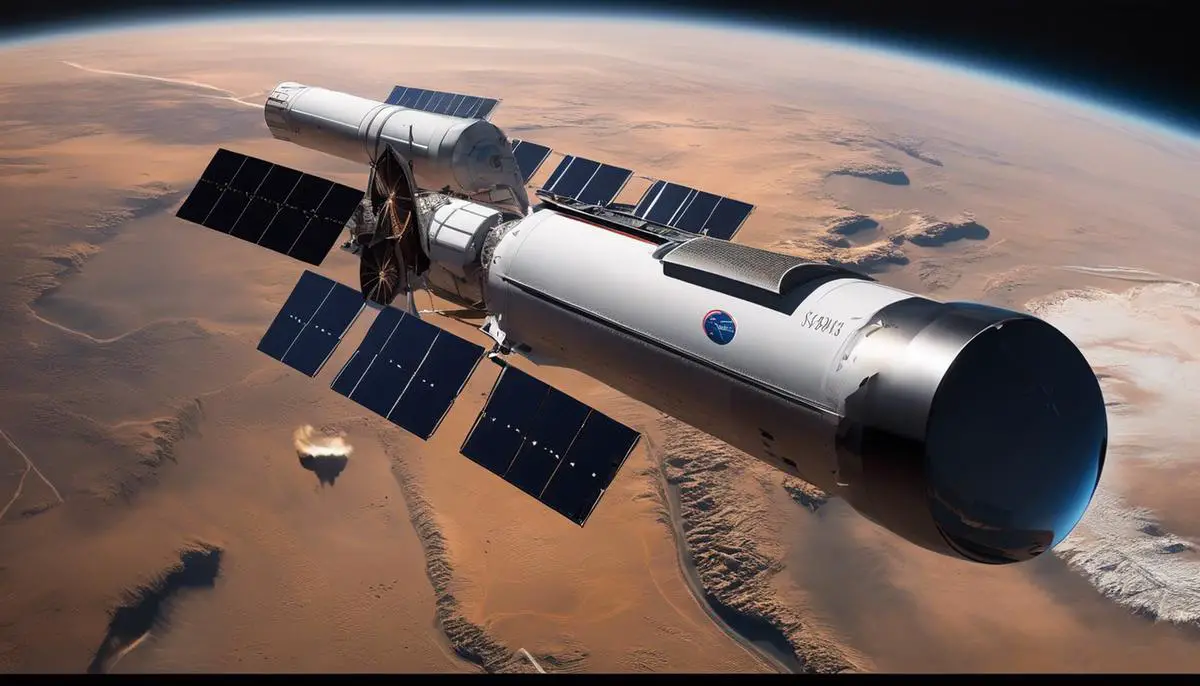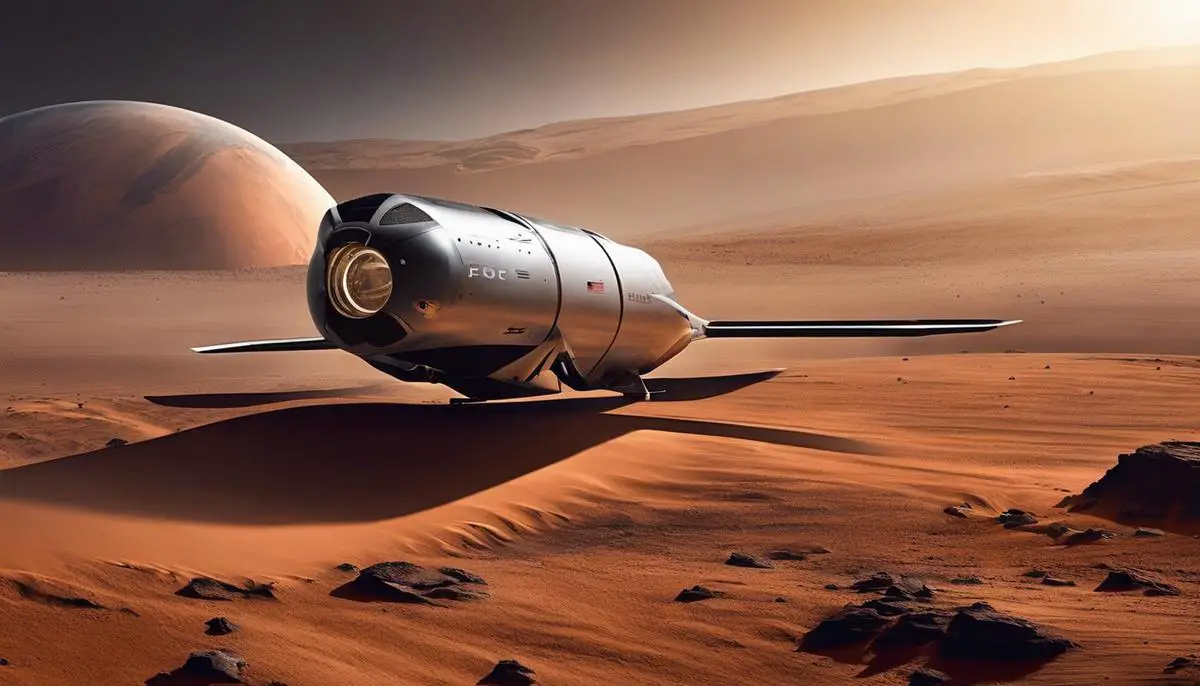As humanity stands on the cusp of becoming a multiplanetary species, the eyes of the world intently focus on SpaceX and its visionary quest to establish a foothold on the enigmatic red sands of Mars. Embarking on one of the most audacious journeys in human history, SpaceX must navigate a labyrinth of technical challenges and innovations never before encountered. From mastering propulsion technology and spacecraft design to ensuring sustainable life support systems, these endeavors are not solely feats of engineering but stepping stones towards an unprecedented legacy. Within the framework of such a monumental task reside questions of economic viability, policy frameworks, and ethical boundaries that shape not just a mission, but the future of human civilization beyond Earth’s blue skies.
Technical Challenges and Innovations
The Technological Crucibles of SpaceX’s Martian Ambitions
The conquest of Mars, as envisioned by SpaceX, encapsulates a harmony of audacious vision and meticulous technological advancements. The endeavor to establish a sustainable human presence beyond Earth necessitates confronting formidable challenges, each poised at the cusp of current engineering and scientific prowess. Among these challenges are propulsion and transportation, life support systems, planetary entry, descent, and landing (EDL), and in-situ resource utilization (ISRU).
Propulsion and Transportation:
The sheer distance to Mars, averaging around 225 million kilometers from Earth, necessitates propulsion systems that transcend conventional chemical rockets. SpaceX’s development of the Starship spacecraft and Super Heavy rocket, powered by Raptor engines utilizing a full flow staged combustion cycle, stands at the forefront of this leap. These engines are designed to provide the herculean thrust-to-weight ratios and specific impulse required for interplanetary travel. Moreover, the vehicle architecture is being crafted to enable refueling in orbit, thus partitioning the voyage to Mars into two critical segments, thereby mitigating the delta-v (change in velocity) and propellant mass constraints.
Life Support Systems:
The creation of a microcosm of Earth’s biosphere in the hostile Martian environment is essential. Advanced life support systems must be self-sustaining, providing air, water, and food for astronauts during their months-long journey to Mars and subsequent occupation. Closed-loop systems that recirculate and recycle necessities are in development, which must function with unerring reliability in conditions devoid of terrestrial fallbacks.
Planetary Entry, Descent, and Landing (EDL):
The Martian atmosphere, being 100 times thinner than Earth’s, presents a unique challenge for EDL. Deceleration from the craft’s interplanetary transfer velocity must be accomplished in this tenuous atmosphere, requiring the judicious integration of heat shields, supersonic retropropulsion, and precision guidance algorithms. SpaceX’s iterative design philosophy is manifest in the testing of iterative prototypes to perfect the EDL sequence that is pivotal for the safe delivery of both crew and cargo to the Martian surface.
In-Situ Resource Utilization (ISRU):
Long-term habitation of Mars depends critically on utilizing local resources to reduce dependence on supplies from Earth. The Martian regolith and atmosphere hold the potential to be harvested to produce water, breathable oxygen, and even propellant for the return journey. Maximizing the efficiency of ISRU technologies stands paramount, as it forms the bedrock of a self-sustaining off-world colony. Specifically, SpaceX has iterated plans to synthesize methane and liquid oxygen on Mars, leveraging the Sabatier reaction – a complex and energy-intensive process – on an unprecedented scale.
The technological crucibles of SpaceX’s Martian venture are not merely engineering exercises; they are testaments to human ingenuity and the relentless pursuit of expansion beyond earthly bounds. As such, the innovations and solutions crafted in response to these challenges will likely reverberate through the corridors of science and technology for generations, influencing a broad spectrum of industries and scientific disciplines. The Mars Mission is a tapestry of aspirational goals woven with pragmatic science, upon which the trajectory of humanity’s future as a spacefaring civilization is being charted.

Photo by mike_kiev on Unsplash
Mission Architecture and Logistics
The orchestration of interplanetary travel is a multifaceted endeavor, demanding an integration of logistics and infrastructure heretofore unparalleled in the annals of space exploration. Within these parameters, SpaceX forges ahead with an ambitious program to establish a sustainable human presence on Mars. This treatise delineates the infrastructure and logistical strategy that SpaceX is deploying beyond the foundational aspects of propulsion, life support, EDL, and ISRU to ensure the viability of its Martian ambitions.
Surface Habitat Design and Construction
One significant logistical challenge entails housing astronauts in a Martian environment. The design ethos behind SpaceX’s habitation strategy is grounded in modularity and scalability. These habitats purport to rely on advanced materials that offer protection from cosmic and solar radiation, dust, and extreme temperature fluctuations. Moreover, the habitats are envisioned as airtight enclosures with internal life support systems that can be autonomously monitored and repaired. The construction employs pre-fabricated elements transported from Earth and those manufactured on Mars utilizing regolith-based materials through 3D printing technologies, promoting resilience and self-sufficiency.
Power Generation and Storage
Sustainable power generation is critical to the success of Martian colonies. The Martian environment presents unique opportunities and challenges for power systems. Solar energy, despite the reduced sunlight on Mars compared to Earth, is currently the mainstay of planned power systems. Research and development into high-efficiency photovoltaic arrays suited to the Martian atmosphere are underway. Moreover, the potential for incorporating miniaturized nuclear reactors, such as Kilopower reactors, into the logistics architecture permits a consistent power supply, critical for life support and industrial activities.
Supply Chain and Resupply Missions
Logistics chains extend beyond Earth-to-Mars transport; they encompass the continuity of supplying and replenishing essential resources. The planning of resupply missions, therefore, adopts a cadence synchronized with launch windows afforded by the alignment of Earth and Mars. These windows, approximately every 26 months, allow SpaceX to minimize energy consumption and payload requirements for the transfer of cargo and personnel. Inventory management on Mars pivots on a balance between redundancy to mitigate supply disruption risks and optimization to reduce excess cargo load. Resupply missions are expected to deliver non-perishable food, scientific equipment, technology components, and other materials unattainable via ISRU.
Communications Infrastructure
Reliable communication between Martian outposts, Earth-based control centers, and intraplanetary traverses is a vital component of the logistical framework. SpaceX’s envisioned communication architecture integrates a constellation of satellites employed to maintain a robust and continuous communication link. The placement of orbiters and repeaters facilitates high-bandwidth data transmission and mitigates signal latency issues inherent in interplanetary communication. As colonies grow, an extendable and comprehensive network system incorporating Martian surface operations is necessary to ensure seamless coordination of activities and data relay back to Earth.
In concert, these strategies—habitat construction, energy provision, supply logistics, and robust communication—are cornerstones upon which SpaceX is incrementally constructing the mechanisms to support human endeavors on Mars. Through rigorous planning and relentless innovation, SpaceX seeks not just to reach the Red Planet, but to foster the evolution of Mars into a vital node of human civilization. This holistic approach to the complex logistics and infrastructure of Mars missions is emblematic of the transformative era of interplanetary expansion that is unfolding.

Economic Feasibility and Funding
Funding the Future: The Economic Framework Behind the SpaceX Mars Mission
The economic underpinnings of the imminent Mars mission spearheaded by SpaceX form a multifaceted framework encompassing private investment, public sector support, strategic partnerships, and long-term revenue generation strategies. The remarkable endeavor of terraforming the Red Planet, while technologically daunting, is equally challenging from a fiscal perspective.
The private sector plays a pivotal role. SpaceX, a trailblazer in the aerospace milieu, has historically demonstrated the ability to secure substantial capital through a synthesis of entrepreneurial verve and meticulous financial strategies. The organization has courted a diverse array of investors attracted to the groundbreaking aspects of space exploration and the economic potentials they envisage in spacefaring technologies and extraterrestrial markets.
Public funding cannot be eschewed, given the scale and existential significance of interplanetary colonization. A synergy with federal space agencies, such as NASA, under the auspices of contracts and grants for private sector-led space initiatives, augments the financial backbone of the Mars mission. For instance, Cargo and Crew Delivery contracts for the International Space Station provide a steady influx of revenue and a proving ground for technologies essential for Mars missions.
Strategic partnerships represent another fulcrum for economic support. Terrestrial corporations, intent on integrating their brands and technologies within the fabric of space exploration, present a viable source of funding. The marketing prestige and innovation platform gained from being associated with such a historic quest are powerful incentives for corporate entities to invest.
Capitalizing on intellectual property, specifically advances in space technology, bulwarks the mission’s financial viability. Licensing agreements, patents, and the commercialization of technologies originally developed for interplanetary travel permeate a range of sectors, from telecommunications to materials science, generating a recurrent revenue stream.
Looking to the horizon, monetizing activities and resources on Mars could sustain and justify the initial investment. Mining Martian regolith for water and minerals and harnessing solar energy for power are potential avenues for revenue. The very notion of Mars as an exotic locale may spark a nascent tourism industry, albeit in the distant future.
In summation, the economic architecture supporting SpaceX’s Martian ambitions is a complex, dynamic construct that encompasses an amalgam of revenue streams and financing mechanisms. The fiscal strategizing involves not merely funding a singular mission, but underwriting an entire infrastructure for sustained human presence on Mars. The path to the Red Planet is paved not only with scientific innovation and engineering prowess but also with diligent economic planning and robust financial partnerships. As humanity stands on the precipice of becoming a multi-planetary species, the approach to financing such an unprecedented leap must be as innovative as the technology propelling us towards the stars.

Space Policy and International Cooperation
The Nexus of Space Policy and International Cooperation in Realizing Martian Aspirations
As humankind stands on the precipice of its most audacious venture yet—the colonization of Mars—the imbrication of space policy and international collaboration emerges as an indispensable catalyst. Space exploration, particularly the establishment of a sustained human presence on Mars, is not solely the endeavor of a single entity or nation. It entails a comprehensive framework of governance that transcends national boundaries and propels the collective ambitions of our species.
Space policy exerts a profound influence on the operational paradigm of extraterrestrial ventures. It encompasses a broad spectrum of considerations, including adherence to the Outer Space Treaty—which establishes the principles governing the activities of states in the exploration and use of outer space—and the regulatory mechanisms that ensure the peaceful use of space. In the case of SpaceX’s Mars missions, the intricacies of space law will steer the endeavor as it traverses the legal and ethical space of interplanetary operations.
As regulatory bodies seek to safeguard celestial environments, the adherence to planetary protection protocols ensures that Mars missions by SpaceX are conducted in a manner that prevents biological contamination. The manifestation of robust policy frameworks will facilitate the alignment of SpaceX’s methodologies with the internationally established guidelines for sterilization and environmental preservation.
International cooperation is poised to play a pivotal role in the logistics and infrastructure required for sustained expeditions on Mars. The intergovernmental exchange of data, expertise, and technology will lend vigor to the technological evolution necessary for successful colonization. This includes shared development of interplanetary navigation systems, standardized communication assets, and mutually beneficial scientific research outposts.
The space-faring ambitions of nations worldwide are increasingly synchronized, as evidenced by the International Space Station—a testimony to what can be achieved through collaborative efforts. Similar models of international partnership may be envisioned as essential for the support structures that will underpin Mars operations. Joint ventures may see the combination of diverse technological competencies, ranging from habitat construction to advanced life support systems, thus distributing the fiscal and technical burdens across a wider network of contributors.
Moreover, international consortia may prove to be paramount in risk mitigation, sharing the formidable expenses and potential losses of Martian exploration. A multinational approach can diffuse the geopolitical tension that might arise from territorial claims or resource exploitation, fostering instead a model of governance that espouses the planet as a shared scientific sanctuary.
Crucially, diplomacy will be integral in harnessing global goodwill towards SpaceX’s Martian aspirations. The inherent value of Mars missions sited within scientific advancement, knowledge expansion, and interplanetary diplomacy is anticipated to encourage congenial diplomatic relations, thereby furthering international consent and sponsorship of these missions.
SpaceX’s interplanetary endeavors will resonate profoundly within the ambit of global space politics. The intricate web of international treaties and agreements will need to be navigated astutely to ward off any hindrance that might impede progress. Frameworks to accommodate private-sector activities in space without transgressing international norms will be essential in maintaining a conducive environment for the realization of Mars as a second cradle for humanity.
In summation, the enmeshment of space policy and international collaboration renders itself as a backbone for SpaceX’s Martian endeavors. The calibration of these relationships and frameworks is not only a predicate for the success of the missions but also a testament to the shared future of human civilizations, entwined in the shared tapestry of space exploration.

Planetary Protection and Ethical Considerations
Planetary Protection Implications and Ethical Considerations Surrounding SpaceX’s Ambitions for Mars
In the vanguard of contemporary space exploration, SpaceX’s ambitions to colonize Mars represent a monumental leap for humankind. While matters such as propulsion, transportation, and habitat construction have been thoroughly researched and meticulously planned, it is imperative to discuss the significant planetary protection implications and ethical considerations that arise with such interplanetary endeavors.
Planetary protection, an aspect of space ethics and policies, refers to the practices implemented to preserve the integrity of celestial bodies and to inhibit the interplanetary cross-contamination of biological entities. These practices are not strictly pertinent to the safeguarding of life forms but also to the intrinsic geological and atmospheric conditions that could yield scientific insights into origins and evolutions of terrestrial and extraterrestrial life.
SpaceX’s missions to Mars pose challenges to planetary protection in several ways. The introduction of Earth-based microbial life to the Martian environment could irrevocably alter the planet’s biosphere, or, more pointedly, its prebiotic or biotic landscape. This would not only contaminate pristine extraterrestrial ecosystems but also compromise the integrity of research into Martian life, if such exists or previously existed.
Adhering to the strict guidelines laid out by the Committee on Space Research (COSPAR) for the prevention of biological contamination is crucial. These stringent sterilization protocols ensure that spacecraft and payloads adhere to acceptable biological burden limits. Ensuring compliance is complex, involving cutting-edge decontamination technologies and verification processes that could introduce significant costs and constraints to mission design and timelines.
Furthermore, there is an ethical mandate to preemptively establish frameworks that address potential Martian microorganism encounters. Presuming any indigeneity of life on Mars, there arises an ethical responsibility to avoid harmful disturbances and to preserve the autonomy of such ecosystems.
Addressing possible inadvertent harm to astronauts also falls within this domain. Contact with Martian dust or regolith, which may contain toxic compounds such as perchlorates, underscores the necessity for effective dust mitigation strategies in habitats and spacesuits. Protecting the health and safety of Mars mission crews is not solely a logistical consideration but an ethical imperative to ensure no undue harm comes to these pioneers.
Moreover, the implications of terraforming Mars, a distant but conceivable reality given SpaceX’s ambitious future outlook, present an arena fraught with environmental ethical considerations. Altering the Martian atmosphere or surface to accommodate human occupation encapsulates a myriad of philosophical contemplations on altering alien worlds, akin to our responsibilities towards Earth’s environment.
Lasty, recognizing Mars as a repository of history and a natural setting for understanding our solar system’s evolution, the conversation transcends to include the appreciation of the planet as both a scientific and a cultural artifact. The concept of ‘planetary park systems’ to conserve specific regions of significant interest, analogous to UNESCO World Heritage sites on Earth, may form part of future deliberations.
In conclusion, SpaceX’s Mars colonization intentions necessitate a deepened understanding and engagement with planetary protection policies and ethics. While the technical challenges of interplanetary travel are solved with human ingenuity and persistence, the ensuing ethical challenges must be met with equal vigor and foresight. Safeguarding the evolutionary tales embedded in the Martian soil and air will enrich our cosmic consciousness and affirm our commitment to being responsible stewards of our celestial neighborhood.

The foray into the Martian expanse is more than a test of scientific and technological prowess; it represents a profound chapter in the human narrative, where ambition intersects with the stark realities of a cold, indifferent universe. SpaceX’s trailblazing path to Mars weaves through the intricate fabric of economics, policy, ethics, and international collaboration, each a critical strand in the tapestry of interplanetary exploration. In the pursuit of red planet habitability, we stand not just at the threshold of discovery, but at the precipice of a new era where the preservation and evolution of life extend across the void of space, demanding a harmonious balance that respects both our celestial neighbor and the intrepid spirit of exploration that propels us to the stars.
![]()
